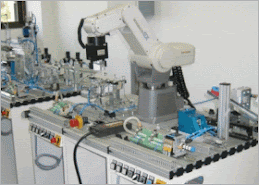A Japanese engineer from Yasukawa Electric Company coined the term “mechatronics” in 1969 to reflect the merging of mechanical and electrical engineering disciplines। Until the early 1980s, mechatronics meant a mechanism that is electrified. In the mid-1980s, mechatronics came to mean engineering that is the boundary between mechanics and electronics. Today, the term encompasses a large array of technologies, many of which have become well known in their own right. Each technology still has the basic element of the merging of mechanics and electronics but now also may involve much more, particularly software and information technology.
For example, many early robots resulted from mechatronics development। As robot systems became smarter, software development, in addition to the mechanical and electrical systems, became central to mechatronics.
Mechatronics gained legitimacy in academic circles in 1996 with the publication of the first refereed journal: IEEE/ASME Transactions on Mechatronics. In the premier issue, the authors worked to define mechatronics. After acknowledging that many definitions have circulated, they selected the following for articles to be included in Transactions: “The synergistic integration of mechanical engineering with electronics and intelligent computer control in the design and manufacturing of industrial products and processes.”1 The authors suggested 11 topics that should fall, at least in part, under the general category of mechatronics:
modeling and design
system integration
actuators and sensors
intelligent control
robotics
manufacturing
motion control
vibration and noise control
micro devices and optoelectronic systems
automotive systems, and
other applications

+Tbk..jpg)

